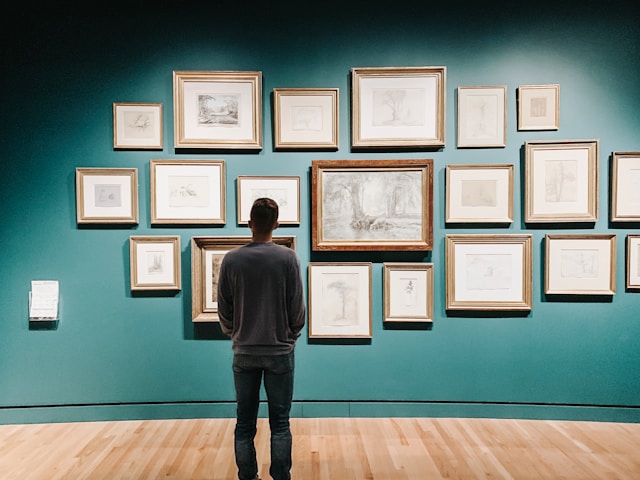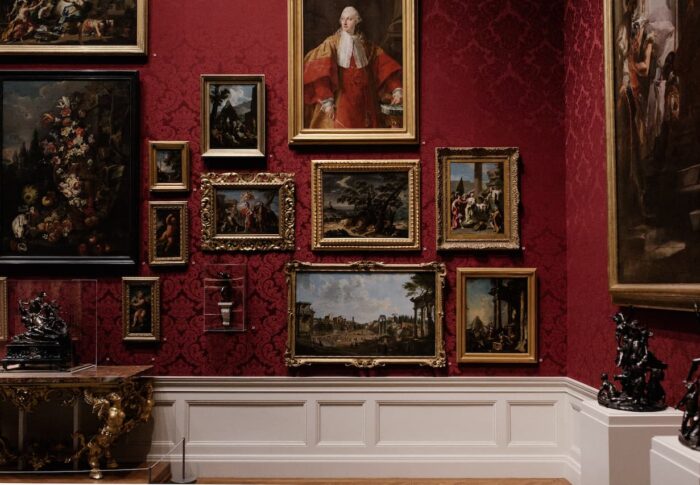
Are Backpacks Allowed in European Museums? A Comprehensive Guide
Traveling through Europe offers the unique opportunity to immerse yourself in a rich tapestry of history, art, and culture. Europe world-class museums and cultural institutions are highlights for many travelers. However, navigating the practical aspects of museum visits, such as backpack policies, can enhance your experience significantly. This guide explores backpack regulations across European museums, offers strategies for managing bag restrictions, and provides tips to ensure a comfortable and enjoyable museum visit.
Understanding Backpack Policies in European Museums
European museums vary widely in their policies regarding backpacks and other personal items. These policies are primarily designed to protect valuable artworks, ensure visitor safety, and maintain an enjoyable environment for all patrons. Here’s a closer look at general trends and specific examples:
General Trends
- Size Matters: Most museums differentiate between small, personal-sized backpacks and larger, more cumbersome bags. Small backpacks, typically those that can be comfortably carried on the back without protruding, are usually permitted. Larger backpacks, hiking packs, and oversized bags often face restrictions.
- Security Concerns: Policies are influenced by concerns about theft, accidental damage to exhibits, and the potential to block walkways or create hazards around sensitive displays.
- Cultural Sensitivity: In regions with particularly delicate or priceless collections, museums may adopt stricter bag policies to preserve their treasures.
Specific Museum Policies
- The Louvre, Paris: Allows small backpacks but prohibits larger bags. Visitors with oversized bags are required to use cloakrooms or storage facilities available at the museum entrance.
- Uffizi Gallery, Florence: Implements size restrictions on bags. All bags exceeding a specified dimension must be checked in before entry.
- Prado Museum, Madrid: Notably more lenient, the Prado imposes no restrictions on backpacks. However, visitors are still encouraged to be mindful of their belongings and considerate of others.
- British Museum, London: Allows small bags but restricts large backpacks and suitcases. There are ample storage facilities for visitors who need to check larger items.
- Vatican Museums, Vatican City: Enforces strict bag policies due to the high volume of visitors and the significance of the artworks. Large bags are not permitted, and storage services are provided.
- Rijksmuseum, Amsterdam: Similar to the Prado, the Rijksmuseum generally permits backpacks but advises visitors to be cautious and respectful of exhibit spaces.
Navigating Bag Restrictions
If you’re planning to visit museums with strict backpack policies, consider the following strategies to manage your belongings effectively:
1. Opt for a Smaller Bag
- Choose Appropriately Sized Backpacks: Select a compact, personal-sized backpack that meets the museum’s size requirements. These are less likely to attract attention at security checkpoints and are easier to manage within crowded spaces.
- Alternative Bags: Consider using a crossbody bag, tote, or messenger bag. These alternatives can carry essentials like wallets, cameras, and guidebooks without the bulk of a traditional backpack.
2. Utilize Museum Facilities
- Cloakrooms and Lockers: Many museums offer secure storage options where you can leave larger bags for the duration of your visit. These facilities are usually free or available at a nominal fee.
- Early Arrival: Arriving early gives you ample time to check in your belongings without feeling rushed.
3. Portable and Foldable Solutions
- Foldable Bags: Carry a lightweight, foldable bag that can be easily stowed when not in use. These bags can expand to hold essentials when needed and remain compact otherwise.
- Minimalist Packing: Bring only what you need for your visit. Reducing the number of items you carry can eliminate the need for larger bags.
4. Third-Party Storage Options
- Local Storage Services: In cities with limited museum storage options, consider using nearby storage services or lockers available in public transportation hubs.
- Hotel Storage: If you’re staying at a hotel, inquire if they offer luggage storage before check-in or after check-out.
Enhancing Your Museum Visit: Health and Comfort
Beyond managing your backpack, ensuring your health and comfort can significantly enhance your museum experience. Here are some considerations:
1. Maintaining Air Quality
Museums, especially those housing delicate artifacts, often maintain controlled environments with limited ventilation. To ensure you breathe clean air:
- Stay Hydrated: Carry a reusable water bottle to stay hydrated. Many museums have water fountains or allow you to bring your own water.
- Portable Air Purifiers: For those with sensitivities or respiratory concerns, a portable air purifier can be beneficial. Devices that filter out allergens, dust, and pollutants can make your visit more comfortable.
One such device is the GermGuardian AC4825. This HEPA air purifier is lightweight and compact, making it easy to bring along on museum trips. It quickly filters out allergens, dust, and other pollutants, providing you with cleaner, healthier air to breathe.
The GermGuardian’s 3-in-1 design also includes a charcoal filter to reduce odors and a UV-C light to kill airborne bacteria and viruses. This helps protect you from getting sick, which can put a damper on your sightseeing plans.
By using a portable air purifier like the GermGuardian, you can stay healthy and focused on enjoying the amazing art, artifacts, and architecture of Europe’s world-class museums. Its small size means you can tuck it into a small bag or even keep it with you while exploring.
2. Physical Comfort
- Comfortable Footwear: Museums typically involve extensive walking and standing. Wear shoes that provide good support and cushioning to prevent fatigue.
- Dress Appropriately: Consider the museum’s environment and climate. Lightweight, breathable clothing is ideal for warmer climates, while layered clothing is suitable for cooler settings.
3. Health Precautions
- Hand Sanitizer: Carry a small hand sanitizer to maintain hygiene, especially in crowded spaces.
- Face Masks: Depending on current health guidelines, face masks may be recommended or required, particularly in areas with high visitor traffic.
Practical Tips for a Successful Museum Trip
Maximizing your museum experience involves more than just managing your backpack. Implementing the following tips can help you navigate museums smoothly and enjoyably:
1. Plan Ahead
- Research Bag Policies: Before your visit, check the museum’s official website for specific regulations regarding bags and personal items.
- Book Tickets in Advance: Many popular museums require or recommend booking tickets online to avoid long queues.
- Check Exhibit Schedules: Be aware of special exhibitions, events, or guided tours that may interest you or require separate tickets.
2. Time Your Visit Wisely
- Off-Peak Hours: Visiting during weekdays or early mornings can help you avoid large crowds, making it easier to navigate and appreciate the exhibits.
- Allocate Sufficient Time: Museums are vast and can be overwhelming. Plan your visit to focus on areas of particular interest to prevent fatigue.
3. Be Mindful of Etiquette
- Respect the Art: Avoid touching exhibits unless permitted, refrain from using flash photography, and keep noise levels low to maintain a respectful atmosphere.
- Stay on Designated Paths: Follow signage and pathways to protect both the artwork and your safety.
4. Utilize Audio Guides and Apps
Enhance your experience by using audio guides or mobile apps that provide in-depth information about exhibits. Many museums offer these resources to help visitors gain a deeper understanding and appreciation of the displays.
5. Take Breaks
- Rest Areas: Use designated rest areas to take breaks, which can help you stay energized and engaged throughout your visit.
- Refreshments: Enjoy a meal or a snack at the museum cafГ© to recharge. Bringing your own light refreshments is also an option, provided it complies with museum policies.
Special Considerations for Families and Groups
Visiting museums with children or in larger groups requires additional planning:
1. Family-Friendly Facilities
- Strollers and Carriers: Check if the museum allows strollers or baby carriers. Some museums may have specific guidelines or designated areas for their use.
- Interactive Exhibits: Look for museums that offer interactive displays or dedicated children’s areas to keep young visitors engaged.
2. Group Visits
- Advance Reservations: Large groups may need to book tours or entry times in advance to ensure a smooth experience.
- Designated Meeting Points: Establish clear meeting points in case members of the group become separated.
Conclusion
Exploring Europe’s renowned museums is a rewarding experience that offers a window into the continent’s artistic and cultural heritage. By understanding and adhering to backpack policies, managing your belongings effectively, and following practical tips for comfort and etiquette, you can enhance your museum visits significantly. Whether you’re marveling at the masterpieces in the Louvre, exploring the rich history of the Uffizi Gallery, or delving into the vast collections of the Prado Museum, being well-prepared ensures a memorable and enjoyable journey through Europe’s illustrious museums.
Additional Resources
- Museum Websites: Always refer to the official websites of the museums you plan to visit for the most accurate and up-to-date information on policies and exhibits.
- Travel Guides: Consider utilizing travel guides or apps that specialize in museum tours and cultural experiences.
- Local Tourism Offices: These can provide valuable information on museum policies, transportation, and local attractions to complement your visit.
By taking the time to prepare and understand the nuances of each museum’s policies, especially regarding backpacks, you can focus on what truly matters: experiencing and appreciating the incredible art and history that Europe’s museums have to offer.




